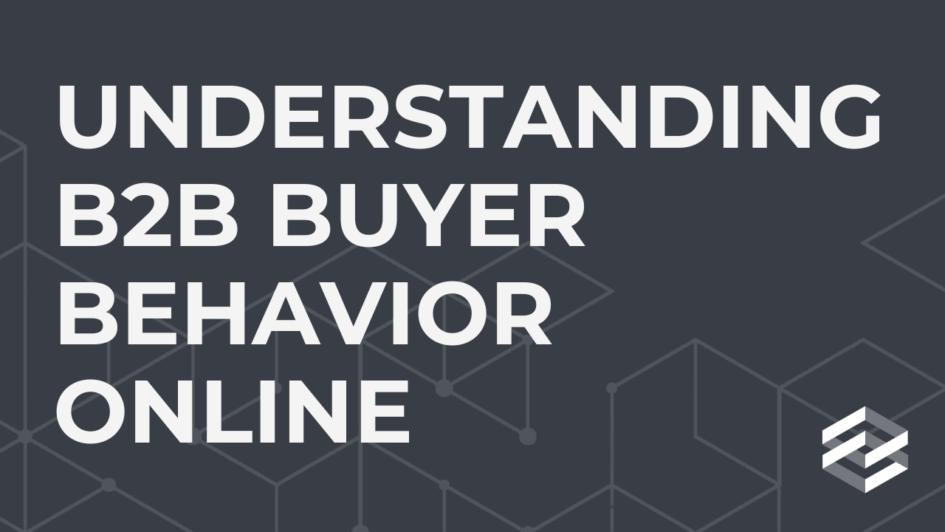Understanding and predicting B2B buyer behavior is key to thriving in e-commerce. Unlike B2C transactions, B2B purchases involve complex decision-making processes, multiple stakeholders, and larger transaction volumes. By understanding the intricacies of B2B buyer behavior, businesses can tailor their strategies to meet the specific needs of their clients, ultimately driving growth and fostering long-term partnerships.
The Complexity of B2B Decision-Making
One of the defining characteristics of B2B transactions is the complexity of the decision-making process. Unlike individual consumers, B2B buyers often represent a team or organization with various departments and decision-makers. This multi-layered approach involves:
- Multiple Stakeholders: B2B purchases typically require the approval of multiple stakeholders, including procurement officers, department heads, and financial controllers. Each stakeholder has unique priorities and concerns, which must be addressed to gain consensus.
- Extended Sales Cycles: The B2B buying process is usually longer than B2C due to the need for thorough evaluations, negotiations, and approvals. Understanding the extended sales cycle allows businesses to develop nurturing strategies that keep potential clients engaged throughout the process.
- Rational Decision-Making: B2B buyers prioritize rational decision-making based on data, ROI, and long-term benefits. They require detailed product information, case studies, and demonstrations to make informed choices.
Key Factors Influencing B2B Buyer Behavior
Several factors significantly influence B2B buyer behavior. Recognizing and leveraging these factors can enhance e-commerce success:
- Trust and Reputation:
- B2B buyers place a high value on trust and reputation. Building a strong brand reputation through consistent quality, reliability, and excellent customer service can significantly impact purchasing decisions.
- Providing testimonials, reviews, and case studies from reputable clients can bolster credibility and instill confidence in potential buyers.
- Personalization and Customization:
- Tailoring product recommendations, content, and communication to the specific needs and preferences of each client can enhance the buying experience.
- Offering customization options for products or services can address unique client requirements, making your offerings more appealing.
- Digital Presence and User Experience:
- A robust digital presence helps attract and retain B2B buyers. This includes a fast and easy-to-use website, active social media engagement, and informative content.
- Ensuring a seamless and intuitive user experience on your e-commerce platform is critical. Simplified navigation, easy access to product information, and streamlined checkout processes can significantly improve conversion rates.
- Data-Driven Insights:
- Leveraging data analytics to understand buyer behavior and preferences can provide valuable insights. Analyzing past purchase patterns, website interactions, and feedback can help businesses anticipate needs and tailor their offerings accordingly.
- Implementing CRM systems and other data management tools can centralize information and enhance the overall customer experience.
- Value-Added Services:
- Offering value-added services such as training, support, and after-sales service can differentiate your business from competitors. These services demonstrate a commitment to client success and foster long-term relationships.
- Providing flexible payment options, like invoicing or buying against a PO, and scalable solutions, like account level pricing, can cater to the diverse financial needs of B2B clients.
Strategies for Success in B2B E-Commerce
To succeed in the B2B e-commerce space, businesses must adopt strategic approaches that align with buyer behavior:
- Content Marketing:
- Develop comprehensive content marketing strategies that address the informational needs of B2B buyers. This includes whitepapers, webinars, blogs, and video content that showcase industry expertise and provide solutions to common challenges.
- Account-Based Marketing (ABM):
- Implement ABM strategies to target high-value accounts with personalized marketing efforts. ABM focuses on understanding the unique needs of specific clients and delivering tailored solutions to drive engagement and conversions.
- Enhanced Customer Support:
- Invest in robust customer support systems that provide quick and efficient assistance. Offering multiple channels for support, such as live chat, phone, and email, ensures that clients can easily reach out for help when needed.
- Technology Integration:
- Integrate advanced technologies such as artificial intelligence, machine learning, and automation to streamline processes and improve efficiency. These technologies can enhance personalization, optimize supply chain management, and provide predictive insights.
- Continuous Improvement:
- Stay agile and continuously evaluate and improve your e-commerce strategies. Regularly gather feedback from clients, monitor industry trends, and adapt to changing market dynamics to stay ahead of the competition.
By recognizing the complexity of decision-making, prioritizing trust and reputation, and leveraging data-driven insights, businesses can create tailored strategies that meet the unique needs of their B2B clients. Embracing personalization, enhancing digital presence, and offering value-added services are key to fostering long-term relationships and driving growth in the B2B e-commerce landscape. By staying agile and continuously improving, businesses can navigate the complexities of B2B transactions and achieve sustainable success.

